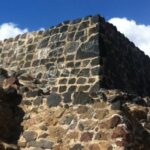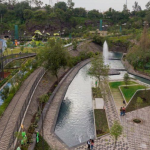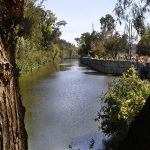_
The Cerro de la Estrella National Park is the focal point around which Iztapalapa seems to turn. It’s home to an outstanding archaeological ruin, including pyramids. It also hosts a museum which documents an ancient, and some will say, still important ceremony. Of course, the mountain has also received tens of thousands of pilgrims, onlookers, and performers for the climax of the area’s annual Easter passion play.
The national park was declared in 1938. Originally, much larger, today it’s a bit more modest, surrounded as it is by City. It’s the same City which has consumed the one time volcano and which today seeks to preserve what remains of it. A 2019-20 restoration of the park has included new pollination gardens of flowers for the area’s bees. There are also cactus and agave garden, a new playground, outdoor exercise area and jogging path.
A trail to the pyramid was restored as was a new lookout point and viewing area. More than 18,000 trees were planted in an effort to control erosion. And lighting and signage have also been restored.
It is a place of tremendous historical and archaeological importance. Civilization here goes back more than a thousand years. It’s not just the backdrop to Culhuacan, the city-state believed to have been founded in 600 CE. But it’s also a geological site of many millions of years in age, and a present day symbol and centerpiece for all of Iztapapalapa.
The Cerro de Estrella National Park can be reached from the Metro station named for the mountain. An alternative is the Culhuacan station, which allows visitors to take in some of the ancient city too.
 800 008 9090
800 008 9090

Nearest at 0.02 kms.

Nearest at 0.44 kms.

Nearest at 1.48 kms.

The remarkable legacy of mysterious 500-year-old olive trees...

The forest park of Tláhuac...

A former asphalt plant is reborn as a magnificent city park!

One of the Mexico City's oldest canals is restored and reinvigorated.

Once a forlorn barrier, today's Gran Canal park is uniting multiple neighborhoods.